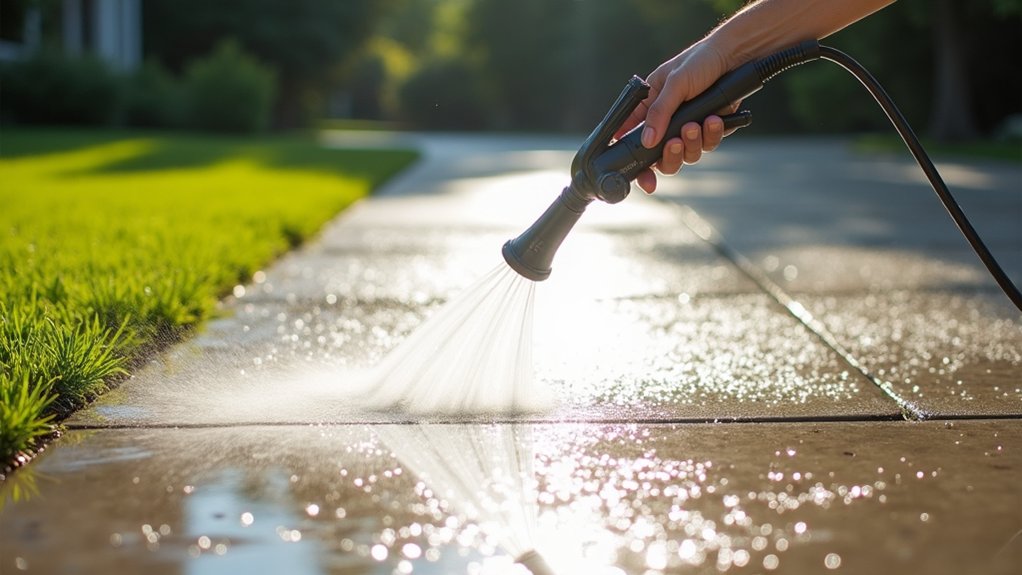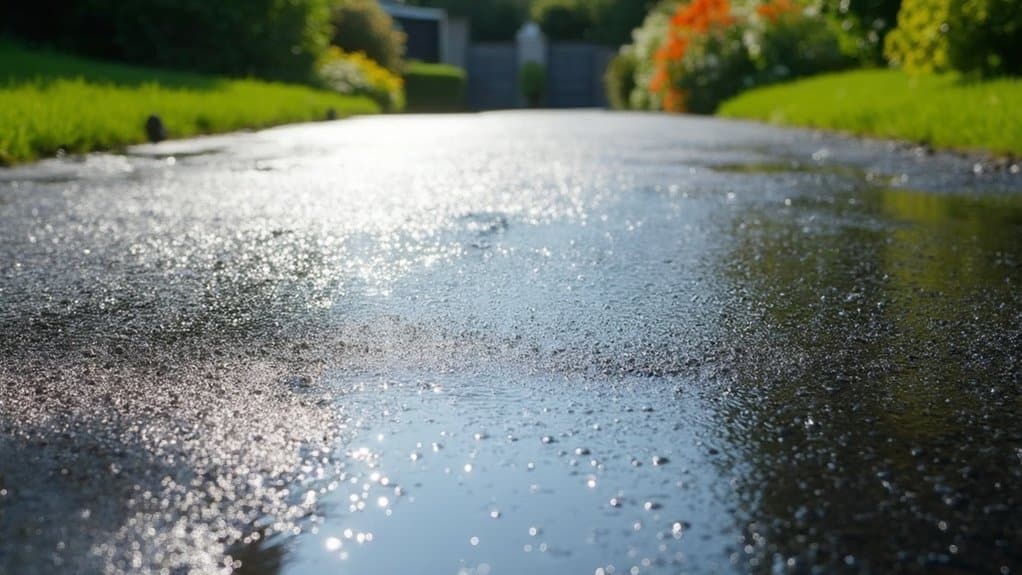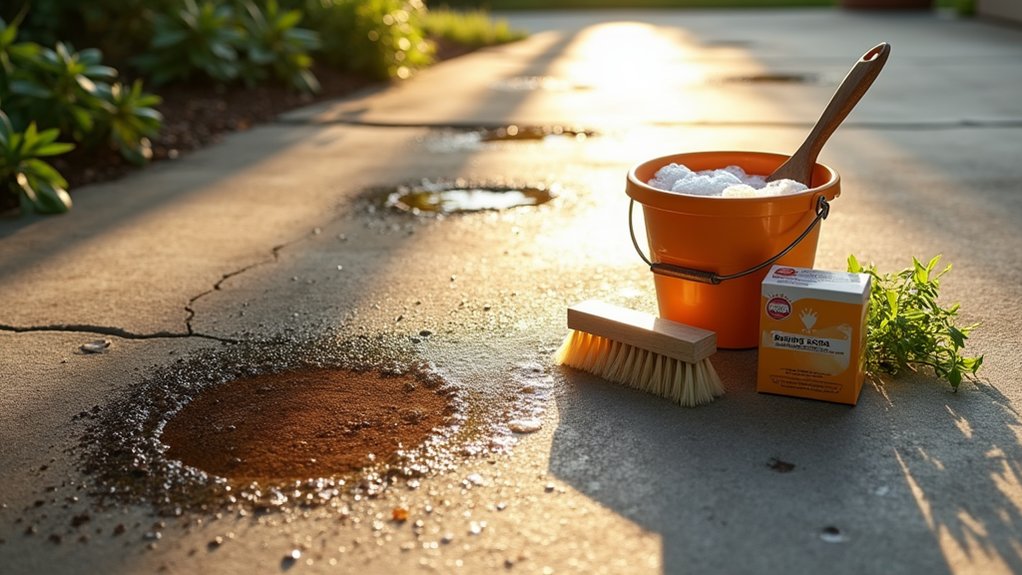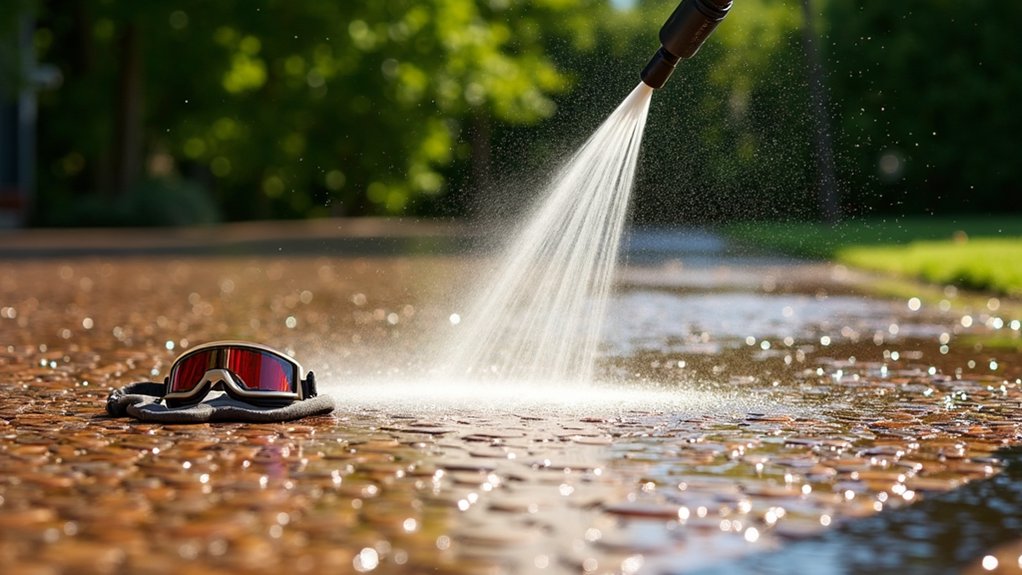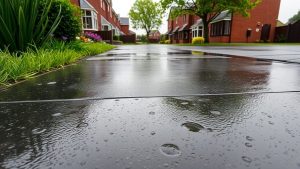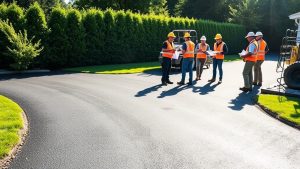To pressure wash your driveway without causing damage, start by clearing the area and checking for any cracks. Use a petrol-powered pressure washer and choose the appropriate nozzle. Begin with a low PSI and increase gradually if needed, working in sections and overlapping your strokes. Opt for eco-friendly detergents and adhere to the dilution instructions. Regular maintenance, such as sealing and prompt repairs, will also help keep your driveway in good condition. There’s plenty more to explore about effective techniques and suitable materials.
Table of Contents
ToggleKey Takeaways
- Begin with a low PSI setting and gradually increase it to avoid damaging the surface.
- Use wide fan nozzles for larger areas and narrow jet nozzles for tough stains for a thorough clean.
- Keep a safe distance from the surface to prevent concentrated jets that could harm the driveway.
- Opt for eco-friendly detergents and follow the dilution instructions to protect both the driveway and nearby plants.
- Regularly check and maintain the driveway to spot any issues early and prevent further damage.
Preparation Before Pressure Washing
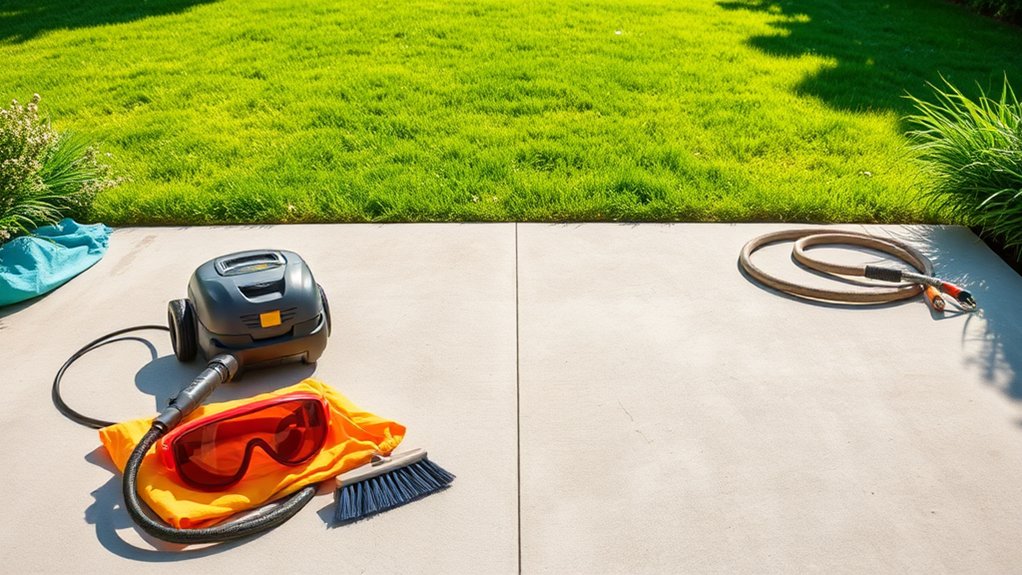
Before pressure washing your driveway, it’s important to take some preparatory steps to ensure the process runs smoothly.
Start by inspecting the surface for cracks or uneven areas that may require extra attention during the wash. Next, clear your driveway of any debris, vehicles, and furniture. Cover nearby plants and surfaces with protective sheets to avoid damage from the high-pressure spray. Remove any weeds poking through the driveway for better cleaning. Additionally, consider using a Surface Cleaner for more efficient and effective cleaning results. Regular pressure washing helps maintain tarmac driveways, extending their lifespan. Finally, give the surface a good sweep to remove excess dirt and debris. These steps will help ensure a safe and effective pressure washing experience, resulting in a cleaner, well-maintained driveway.
Safety Precautions
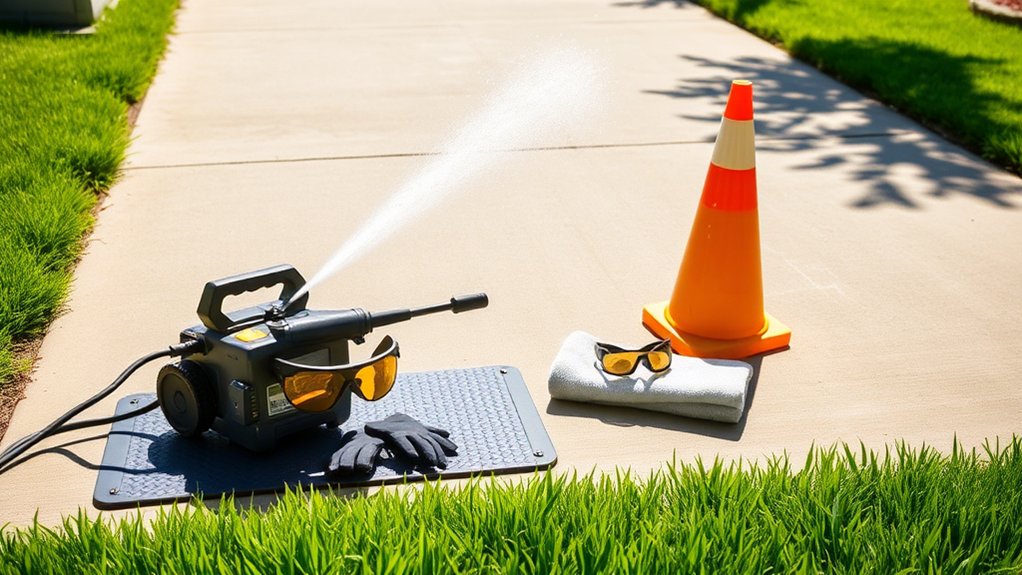
Pressure washing is an effective method for cleaning your driveway, but safety should always come first. Ensure you’ve completed operator training and read the pressure washer’s manual thoroughly. Wear protective gear such as gloves and safety goggles to prevent injuries. Keep a safe distance from windows, doors, and fragile areas to avoid damage. Consider all possible hazards in your surroundings—steer clear of electrical components and watch out for slippery surfaces. Take regular breaks to prevent fatigue. Additionally, contain chemicals and minimise water waste to protect the environment. By following these safety tips, you can clean your driveway effectively and safely.
Choosing the Right Equipment
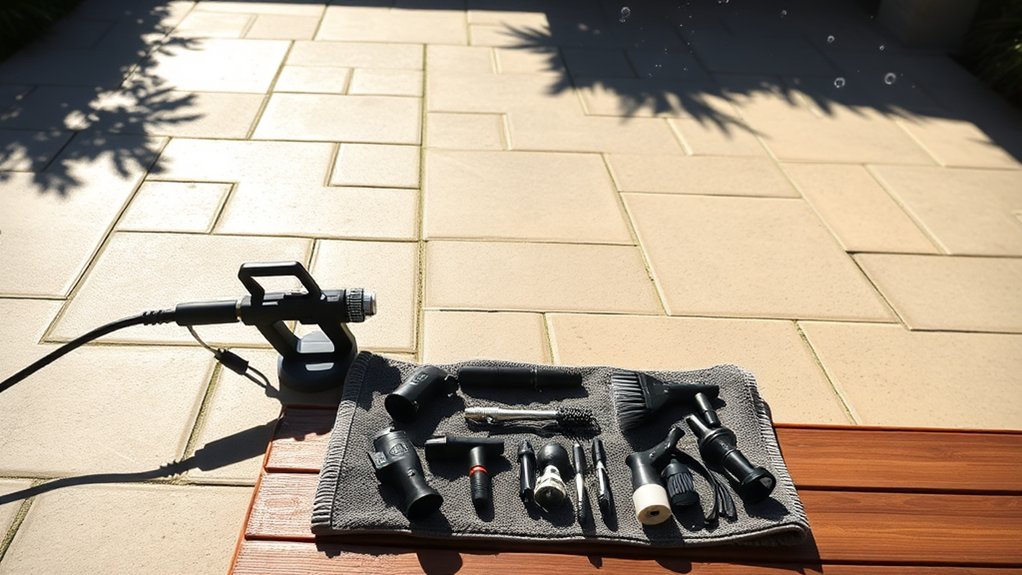
Choosing the right equipment is crucial for effectively pressure washing your driveway.
Consider both the type of pressure washer and the nozzle selection to ensure optimal results. For instance, a petrol-powered washer is ideal for heavy-duty tasks, while an electric model is sufficient for light cleaning. The WPX3400 is a gas pressure washer with 3400 PSI and 2.6 GPM, making it an excellent choice for tough driveway stains. The right nozzle can make a significant difference; a wide fan nozzle is great for large areas, whereas a narrow jet nozzle targets stubborn stains.
With the right setup, you can efficiently remove dirt and stains without risking damage to your surface.
Pressure Washer Types
When selecting the right equipment for pressure washing your driveway, it’s important to understand the different types of pressure washers available.
Electric pressure washers are lightweight, portable, and quieter, making them suitable for small driveways and light-duty tasks. They typically operate at a lower PSI (1,000–2,000).
In contrast, gas-powered pressure washers deliver higher PSI (2,000–4,000) and more cleaning power, making them ideal for larger areas and stubborn stains.
Consider the size of your driveway and the level of grime when making your choice. Always balance PSI and GPM (gallons per minute) to ensure effective cleaning without damaging the surface.
Nozzle Selection Importance
Choosing the correct nozzle for your pressure washer is crucial for effectively cleaning your driveway. The nozzle affects both efficiency and the overall results. Here’s a simple guide to help you pick the right one:
- 0-Degree Nozzle: Ideal for tackling stubborn stains on hard surfaces like concrete.
- 15-Degree Nozzle: Best for removing tough stains and paint from concrete or brick.
- 25-Degree Nozzle: Suitable for general cleaning of surfaces needing moderate pressure, such as cars.
- 40-Degree Nozzle: Provides a gentle spray for delicate surfaces, minimising the risk of damage.
Using the right nozzle not only improves your cleaning outcomes but also protects your driveway from potential harm.
Choose wisely!
Pressure Washing Techniques
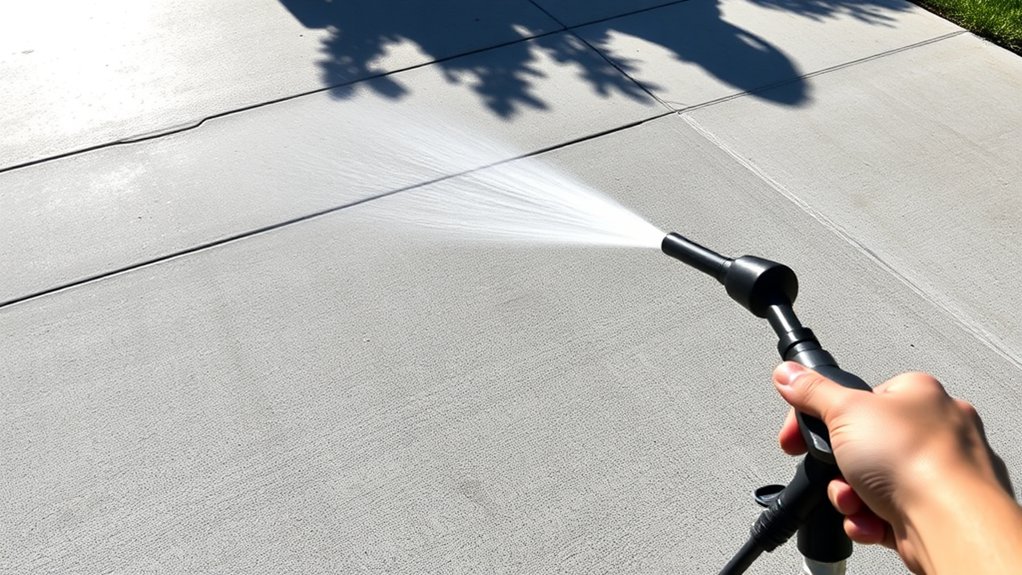
To get the best results when pressure washing your driveway, it’s important to use the right techniques.
Start with a low PSI setting and gradually increase the pressure if needed to avoid causing damage. Use wide fan tips to spread the water evenly and maintain a safe distance from the surface. This prevents concentrated jets that could harm the driveway.
Work in sections and overlap your strokes to ensure thorough cleaning. Regular maintenance is key to keeping your driveway looking its best.
Cleaning Agents and Detergents
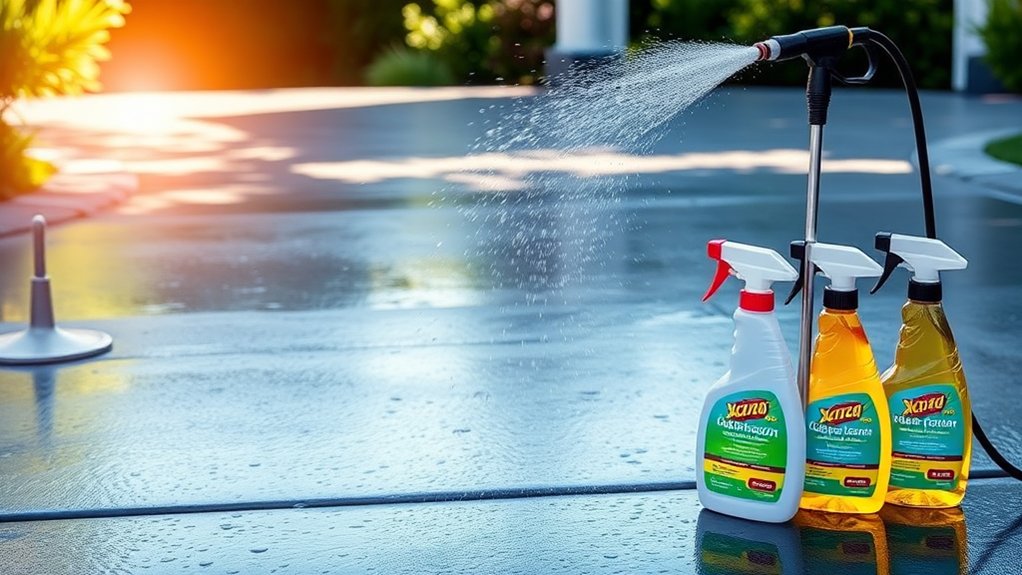
When cleaning your driveway, opting for eco-friendly detergents is wise for both the surface and the environment.
To achieve the best results, ensure you follow the correct dilution instructions for your chosen cleaning agents. This way, you avoid using excess chemicals and prevent any potential damage.
Eco-Friendly Detergent Options
While it may be tempting to grab conventional cleaning products, choosing eco-friendly detergent options can greatly benefit both your driveway’s cleanliness and the environment.
Here are some alternatives to consider:
- Plant-Based Enzymes: These naturally break down organic stains without harmful chemicals, making them safe for the environment.
- Biodegradable Surfactants: Derived from renewable plant oils, these surfactants lift dirt while reducing pollution risks.
- Oxygen-Based Cleaning Agents: Using peroxide, these cleaners effectively tackle stains without harsh bleach, breaking down into harmless oxygen and water.
- DIY Organic Ingredients: Everyday items like vinegar, baking soda, and lemon juice can effectively clean your driveway and are safe for pets and plants.
Opting for these biodegradable options not only ensures effective cleaning but also helps protect our planet. Additionally, using permeable surfaces can enhance water drainage and recharge groundwater supplies, making your cleaning efforts even more environmentally friendly.
Proper Dilution Techniques
Proper dilution techniques are crucial for maximising the effectiveness of cleaning agents during pressure washing. Using the correct dilution ratios ensures your surfactant application is both efficient and safe. Here’s a quick reference table for common dilution ratios:
| Cleaning Agent | Dilution Ratio |
|---|---|
| Bleach (10% SH) | 1:10 for a strong wash |
| Surfactant (Standard) | 1:20 |
| Surfactant (Cold Water) | 1:50 |
| Downstream Injector | 1:20 |
Always calculate the desired volume of your pre-mix and adjust based on the surface you’re cleaning. Properly diluted solutions not only enhance cleaning power but also reduce the risk of damage.
Post-Cleaning Care and Maintenance
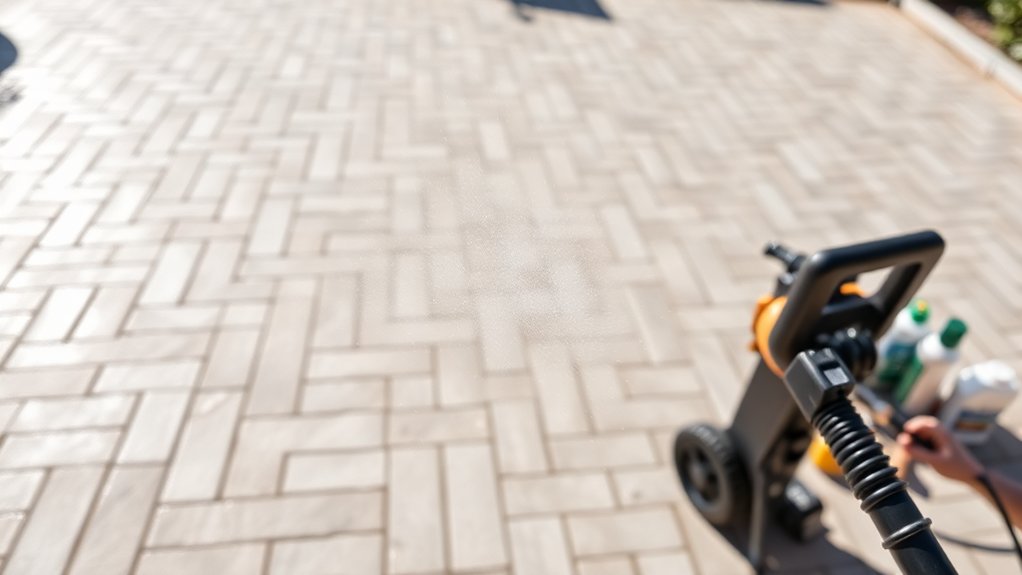
After pressure washing your driveway, it’s important to take steps to ensure its longevity and prevent future damage. Here are some straightforward care tips:
- Driveway Sealing: Use a sealant that’s appropriate for your driveway material to guard against stains and wear.
- Drying Time: Ensure the driveway is completely dry before applying the sealant for proper adhesion.
- Maintenance Schedule: Regularly check your driveway for cracks or stains, and address any issues quickly to avoid further damage.
- Professional Guidance: If your driveway has intricate areas or significant wear, it may be wise to seek professional advice for maintenance. Additionally, consider regularly inspecting your driveway as a proactive measure to maintain its condition and prevent deterioration.
Frequently Asked Questions
How Often Should I Pressure Wash My Driveway?
You should pressure wash your driveway depending on factors like the type of surface, local weather, and any visible stains. Generally, an annual clean is sufficient, but areas with heavy foot or vehicle traffic may require more frequent washing to keep them looking tidy.
Can Pressure Washing Remove Oil Stains Effectively?
Yes, pressure washing can effectively remove oil stains. By using the appropriate PSI and cleaning solutions, you can lift stubborn stains and leave your surface looking clean and fresh. For example, a driveway covered in oil can be restored to its original condition with the right pressure washing techniques.
What Is the Best Time of Year for Pressure Washing?
The ideal times for pressure washing in the UK are during spring and autumn. Spring cleaning helps clear away winter grime, while autumn maintenance tackles the summer debris. These seasonal washes not only enhance cleanliness but also extend the lifespan of your driveway and prevent deep-set stains.
Will Pressure Washing Damage My Driveway Sealant?
You may be curious whether pressure washing can damage your driveway sealant. The answer largely depends on the type of sealant used and how you maintain your driveway. When done properly, pressure washing can actually prolong the life of your driveway without causing harm. For instance, if you have a quality sealant and use the right pressure setting, it can effectively remove dirt and grime, keeping your driveway looking fresh.
How Long Does It Take for the Driveway to Dry After Washing?
After washing, your driveway usually takes between 24 to 48 hours to dry. Factors such as humidity, temperature, and the type of surface can influence this drying time. For the best results, be mindful of these conditions. For instance, a sunny day with low humidity will speed up drying compared to a damp, cloudy one.
Conclusion
In summary, you now have the skills to pressure wash your driveway effectively. By preparing properly and using the right techniques and equipment, you can bring your driveway back to life. Just as a well-kept garden thrives, a bit of care goes a long way. With a careful approach, your driveway will be clean and free of stains, demonstrating that sometimes a gentle touch is all it takes to make a significant difference.
Explore the pros and cons of pressure washing a tarmac driveway and discover essential tips to avoid costly mistakes that Read more
Uncover the most effective methods to eliminate oil stains from your driveway and discover surprising tips that will keep it Read more
Discover the essential dos and don’ts of pressure washing a resin driveway to ensure its longevity and beauty—your driveway deserves Read more

